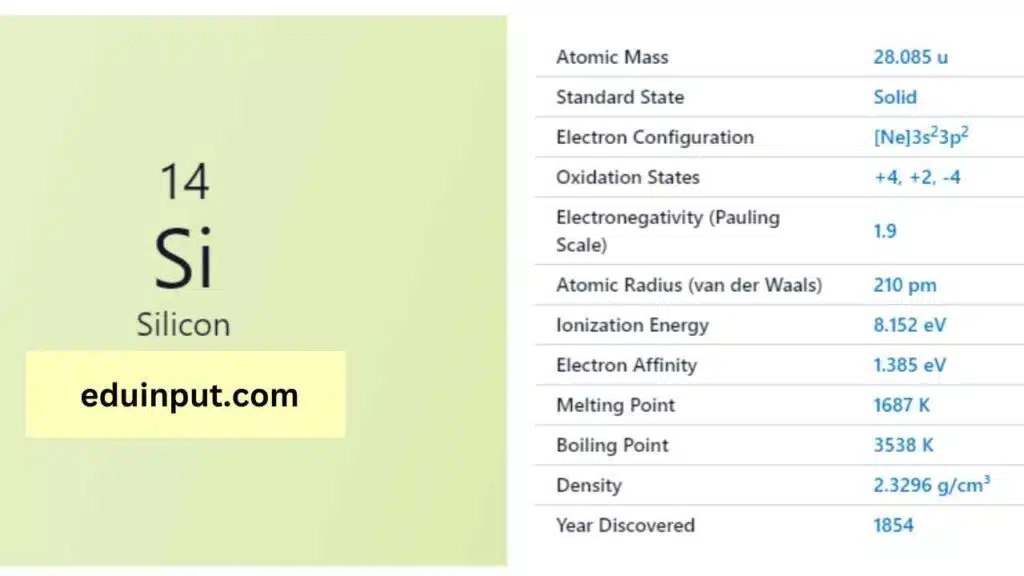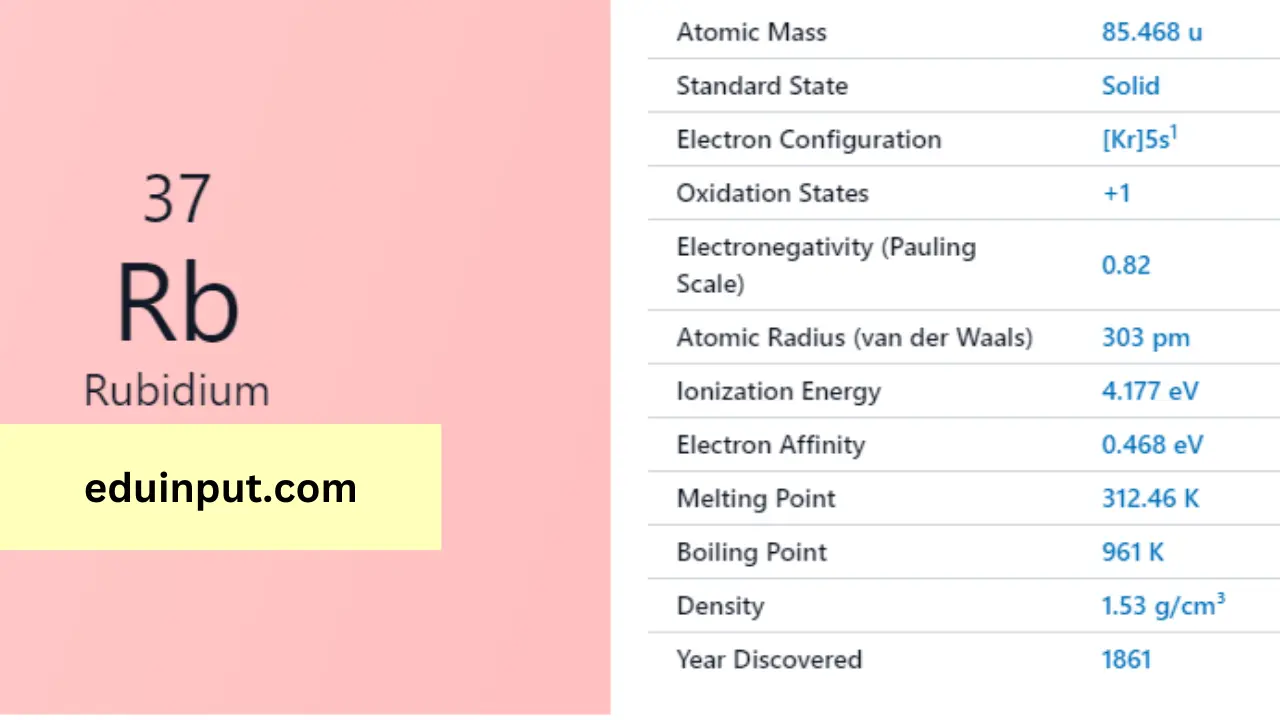Silicone-Discovery, Properties, And Applications
Silicon is a chemical element with the symbol Si and atomic number 14. It is a metalloid, meaning it has properties of both metals and non-metals. Silicon is the second most abundant element in the Earth’s crust after oxygen and is found in various forms such as silicon dioxide (silica) and silicates.

| Property | Value |
| Name | Silicon |
| Symbol | Si |
| Atomic number | 14 |
| Relative atomic mass (Ar) | Group in the periodic table |
| Standard state | Solid at 298 K |
| Appearance | Dark grey with a bluish tinge |
| Classification | Semi-metallic |
| Period in the periodic table | 14 |
| Group name | (none) |
| Block in the periodic table | 3 |
| Block in periodic table | p |
| Shell structure | 2.8.4 |
| CAS Registry | 7440-21-3 |
Discovery
Silicon was first isolated and described in 1824 by the Swedish chemist Jöns Jakob Berzelius. It wasn’t until the 1940s that the production of pure silicon became feasible, leading to its widespread use in various industries.
Physical Properties: Silicon is a hard, brittle crystalline solid with a blue-grey metallic luster. It has a high melting point of 1414 °C and a boiling point of 3265 °C. Silicon is a semiconductor, which means it has electrical conductivity somewhere between that of a metal and an insulator.
Chemical Properties
Silicon is a tetravalent element, meaning it can form four covalent bonds with other elements. It is not very reactive under normal conditions but can react with some strong acids and bases. Silicon can form various compounds such as silicon dioxide, silicon carbide, and silicon nitride.
Facts
- Silicon is the key element in the production of integrated circuits, which power most electronic devices.
- Silicon is used in the manufacture of glass, ceramics, and solar cells.
- Silicon is the eighth most abundant element in the universe.
- Silicon is essential for the growth of many plants, including rice and sugarcane.
Applications
- Integrated circuits and microchips
- Solar cells
- Glass and ceramics
- Sealants and adhesives
- Water repellents
- Silicone rubber
- Lubricants
- In the form of silica, it is used as a food additive and anti-caking agent.







Leave a Reply